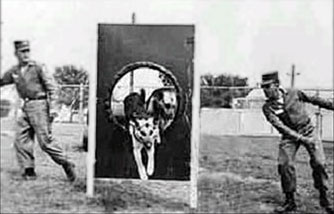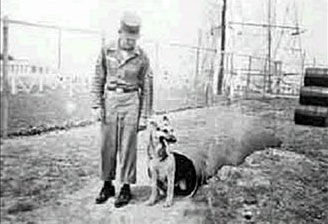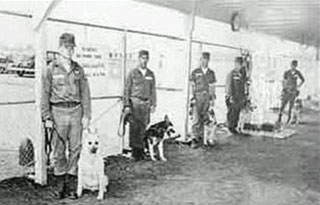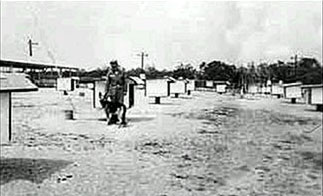The use of sentry dogs were limited in the states to Strategic Air Command (SAC) bases with nuclear weapons or other high priority weapons systems. These dog were well suited for guarding these areas. The majority of these bases were located in parts of the US not known for having a warm climate (for example: North Dakota, South Dakota, Maine, Wyoming, etc). The use of a sentry dog was considered deadly force which limited their use. Patrol dogs were adopted by the Air Force because of the need for a more controllable dog. The patrol dog concept developed by the Washington DC Police Department proved that controllable but still aggressive dog could be effectively used at any military base. The concept of a dog being considered minimum force caused a rapid growth of military dog utilization. Many sentry dogs were retrained to patrol dogs as Army Nike missile batteries located around American cities were phased out. As training methodology improved, drug detector & explosives detector dogs were included in the dog inventory. The dog program owes much to this first class. By the early 1970's many bases had small dog sections. For example; Keesler Air Force Base, Mississippi had 5 dogs in 1976. Two Patrol, Two Patrol/Drug Detector, and one explosive detector dog. Keesler is a training base, that would have never used sentry dogs. The use of force rules concerning dogs evolved. A patrol dog handler could release his dog to attack or utilize physical restraint techniques. Security Police preferred to have the dog "rolling in the dirt" with a suspect instead of having it's personnel risk injury. First Class - September 1968
Instructors
Many of these dog teams were shipped to South East Asia (SEA) bases. Many handlers had more than one tour in SEA. There were more K-9 "slots" in SEA than at stateside bases. Handlers shipped early in their enlistment(4 year) had plenty of time to be reassigned again. Until the late 1960’s all dog training was conducted on Lackland, AFB, Texas. As the number of dogs used increased, training was moved to the Medina Complex. By the mid 1970’s Medina had over 200 dogs in training at any times with over 600 dogs kenneled at the DOD Dog Center. Photos courtesy of Charlie Brugnola |






